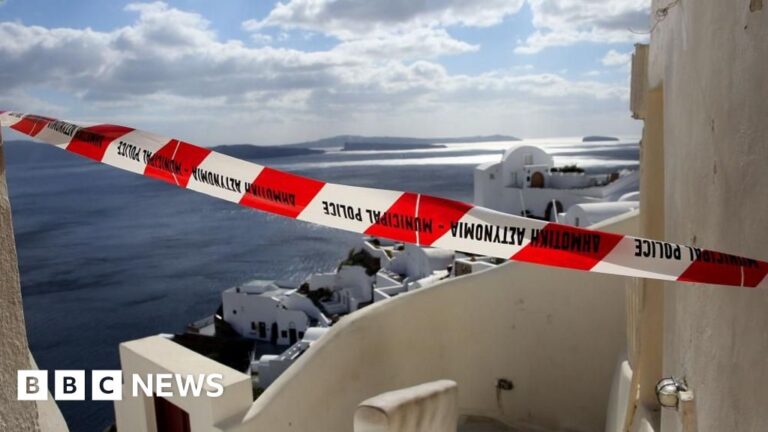Strong Earthquake Near Santorini After Days of Tremors
In the early morning hours of [date], residents of Santorini and surrounding areas were jolted awake by a strong earthquake that registered at a magnitude of 5.8. This seismic event follows several days of tremor activity, raising concerns among locals and tourists alike. Santorini, famous for its stunning sunsets and beautiful caldera, now finds itself in the spotlight for a different reason—the unpredictability of nature.

The earthquake struck near the southern Aegean island, approximately [specific distance] from the main town of Fira, at a depth of around 10 kilometers. Earthquakes of this magnitude are not uncommon in Greece, a nation that lies on the complex tectonic setting of the Mediterranean. The region is characterized by numerous active fault lines, making it one of the most seismically active areas in the world. In fact, Greece averages about 30,000 earthquakes each year, although most go unnoticed.
Residents reported feeling strong shaking for several seconds, leading to a surge of panic as individuals rushed into the streets. Fortunately, preliminary reports indicate that there have been no confirmed fatalities. However, some buildings sustained minor damages, emphasizing the importance of earthquake-resistant structures in regions prone to seismic activity.

The recent seismic activity is a poignant reminder of the region’s volcanic history. Santorini is considered one of the most active volcanic islands in the world, with its last major eruption occurring in 1956. The volatile geology of the Aegean Sea, which includes the notorious Hellenic Arc subduction zone, serves as a warning light for future seismic activity. The island’s unique caldera was formed by an eruption approximately 3,600 years ago, leading to the captivating cliffs and indescribable views that attract millions of tourists today.
Statistics indicate that nearly 50% of Greece’s population resides in areas with high seismic risk. Furthermore, earthquakes can have a significant impact on the nation’s economy, particularly in tourist-dependent regions like Santorini. Approximately 2 million visitors flock to the island annually, contributing essential revenue to the local economy. According to the Greek Ministry of Tourism, the tourism industry accounts for about 18% of the country’s GDP, making it crucial to maintain safety and stability for visitors and residents alike.
In light of the recent quake, authorities have activated emergency response protocols to assess damage and provide support to affected residents. Greece’s National Organization for Emergency Management (NOEM) is on high alert, ready to deploy teams to evaluate the structural integrity of buildings and ensure the safety of the population. Tour operators are also closely monitoring the situation, providing updated information to travelers who may have concerns about visiting the region.

While the earthquake has raised caution among locals and tourists, it is essential to remember that Greece has built a strong infrastructure to deal with such natural disasters. The country has implemented building codes and safety measures aimed at minimizing the risk to human life during seismic events. Studies suggest that adherence to these codes can reduce potential earthquake damage by up to 80%.
As residents and visitors come to terms with the recent tremors, the long-term effects of this earthquake will likely be felt in various ways. It serves as a reminder not only of the power of nature but also of the resilience of the people who call this beautiful island home. Experts encourage visitors to stay informed about local seismic activities, embrace preparedness measures, and approach the enchanting island of Santorini with both excitement and respect for its geophysical nature.
In conclusion, while the strong earthquake near Santorini has understandably caused alarm, it shines a light on the island’s rich geological history and ongoing need for public safety measures. Earthquakes may be a part of life in this beautiful Mediterranean haven, but the ability to adapt and recover makes Santorini a timeless destination. For those planning to visit, staying informed and prepared is key to enjoying the spectacular offerings of this iconic island, even amidst the tremors of an unpredictable Earth.



